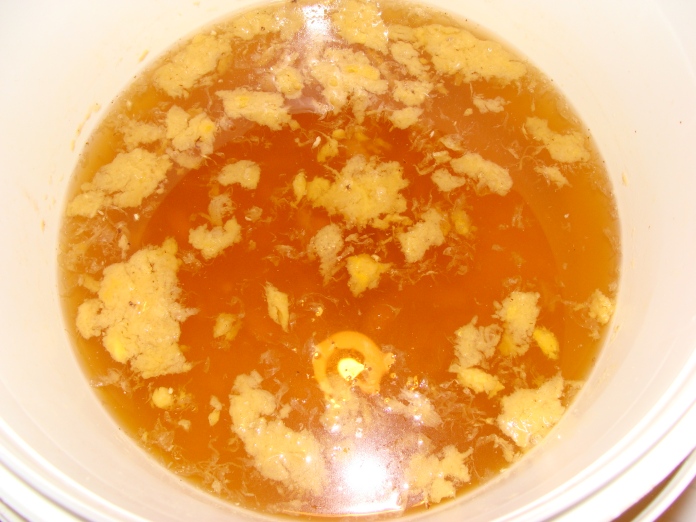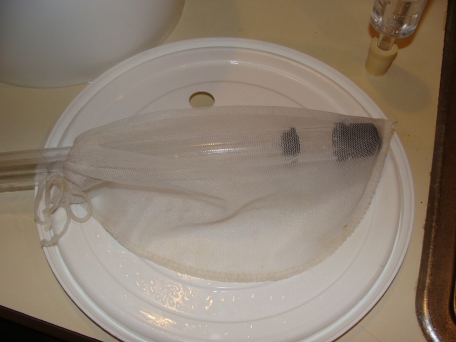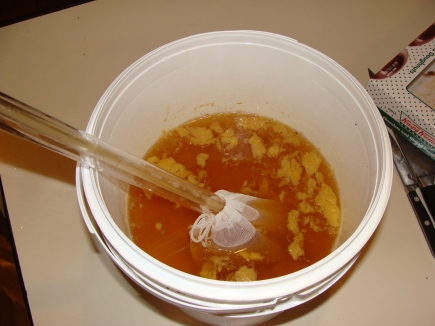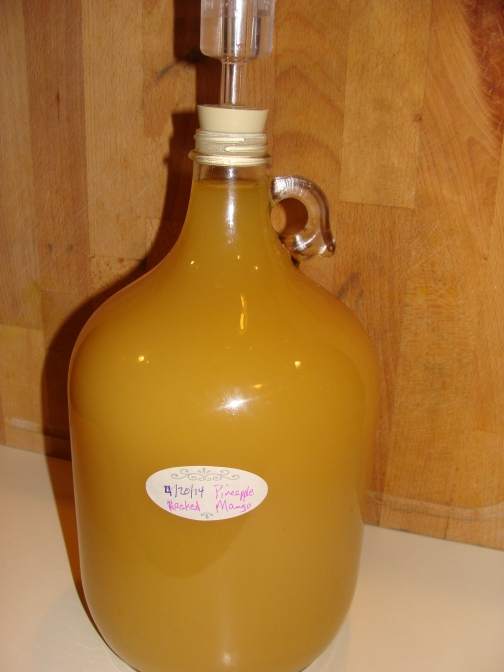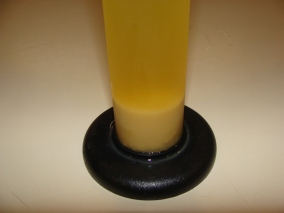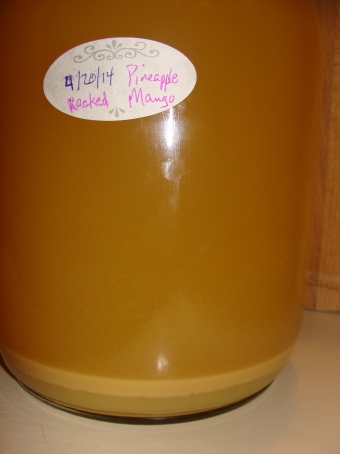
Crushing foraged wild grapes.
I foraged a little over four pounds of wild muscadine grapes yesterday. I have decided to try my hand at wine making this year, instead of jelly…at least with this first round. After a little research on the internet, I am combining a couple of different recipes to adapt to what I have to work with. I have put together 2 quarts of crushed muscadine grapes, skins and all.

Crushed grapes.

I am going to have to run to the home brew shop for some supplies…a mesh bag and yeast. I may need more sugar from the grocery store. The plan is to combine the fruit (in mesh bag) with 6 quarts of water in a 2 gallon fermentation bucket, add enough sugar syrup to boost the SG to at least 1.090 and then add 2 crushed campden tablets, 1/2 t. pectic enzyme (scant), and 2 t. yeast nutrient. That will be covered with cheesecloth and sit for 24 hours. I guess I’m not supposed to seal the bucket yet, as the campden tablets cause a sulfur gas to be released and it needs to be allowed to dissipate. Yeast is to be pitched tomorrow…instructions say to leave covered with cheesecloth again, for 5 to 7 days, stirring daily. After that, it is strained and sealed with an airlock in place and given around 6 weeks to ferment out. Then it gets racked, probably a few times, to clear. Then it gets bottled and ages for at least two years! I’ll probably bottle in beer bombers…I don’t anticipate making enough wine to justify buying a corker and wine bottles/corks. I haven’t seen anyone express concerns with beer bottles. I might want to use the special oxygen absorbing caps, to reduce the risk of oxidation.
So far, I have boiled 3 cups of sugar with enough water to dissolve it…boiled until clear and set aside to cool…we’ll see if that’s enough to get me to 1.090 or better. The first quart of grapes that I crushed have a natural SG of about 1.048, according to my spectrometer. I’ll discuss yeast at the brew shop. The most likely candidates are Champagne yeast or Montrachet, but I’m open to suggestions.
Okay, after a trip to the brew shop and the grocery store, I was ready to proceed. I got a mesh bag, a packet of Montrachet yeast and a 10 pound bag of sugar. I sanitized the bag and a string and added the grape skins/pulp/juice to the bucket and tied off the bag.

Crushed grapes in the bag.
Next I added the sugar syrup that I had prepared and I was still way low on the SG. I also realized that I was running out of room in the 2 gallon bucket, so I prepared a 5 gallon bottling bucket and transferred the grape mixture into it. Then, I weighed out five pounds of sugar and added enough water for it to dissolve into and brought that to a boil, removed it from the heat.

Making sugar syrup
I tried adding in a couple of steps and it wasn’t getting close to SG 1.090 very quickly…but the final addition bumped it up to OG 1.113…oops. Oh well. And my volume is up to almost three gallons…I probably should add more grapes, but I’m out.

Volume at almost 3 gallons. Need to find more grapes? We’ll see if I get a chance to pick more.
I’ll see what it looks like later…I could add more grapes and another campden tablet tomorrow. That would push back the yeast pitch a day, but in a minimum 2 year process, another day is nothing and could make a huge difference in the finished product. Anyway, I put the lid on and sealed it and popped on an airlock. The brew shop guy thought it would be fine to seal and airlock the bucket rather than do the covering with cheesecloth thing…just seemed more risky.
Ginger beer note: the SG dropped to 1.057, so it’s moving…slowly. I thought all the Champagne yeast that I added to it would start it really chugging. It’s popping the airlock about every 10 seconds, but it’s not very aggressive. I guess it’s just going to take more time and patience than I was anticipating for this little side project.
Update 8/22/14, 10:00 a.m.: I went and foraged another 1 pound and 9 ounces of wild muscadine grapes this morning. After crushing them, there was a little less than a full quart jar.

Added additional crushed grapes and Campden tablet.
I crushed an additional campden tablet and threw it in with the grapes. I opened the fermentation bucket, untied the bag and poured in the grapes and crushed campden. I re-tied the bag and gave a good stir. Refractometer reading gives a 1.109 updated OG, with a volume now of just over 3 gallons.

















